By Chris Tan, Executive Vice President, and Fauzi Puniran, Vice President of PEMANDU Associates
Riddled with competing demands for road construction but with a shrinking budget, a Transcontinental Agency needed a strategy to deliver more roads, improve safety and optimise its operations on limited funds.
At the end of 2016, the agency sought transformational solutions with PEMANDU Associates through its proprietary Big Fast Results (BFR) Methodology – 8 Steps of Transformation©.
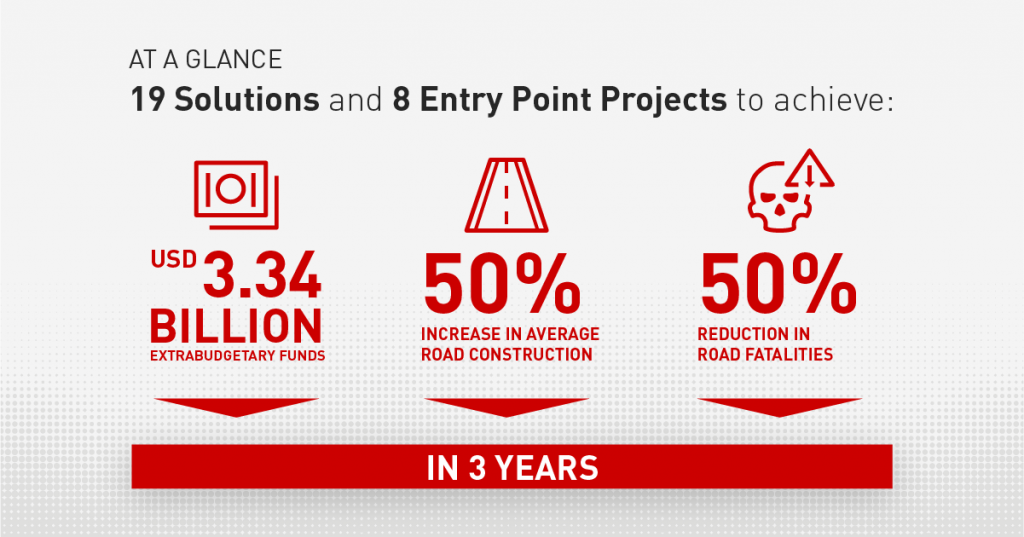
Setting the True North
The Transcontinental Agency is a federal body responsible for overseeing the road transport and transport engineering sectors in its country. The agency directly manages federal roads, including road construction and reconstruction, as well as repair and maintenance works.
In spite of its best efforts, approximately 5,000km of roads under the Transcontinental Agency’s purview were deemed insufficient and of subpar quality. The resulting traffic congestion amounted to USD 26.79 million in estimated losses of economic benefit per year. The country also suffered the 2nd highest road fatality in the region, with 19 deaths per 100,000 population. The urgency of this situation, on top of its budget constraints, spurred the Transcontinental Agency to embark on a transformation journey with PEMANDU Associates, with clear goals to achieve its aspiration as a premier federal agency:
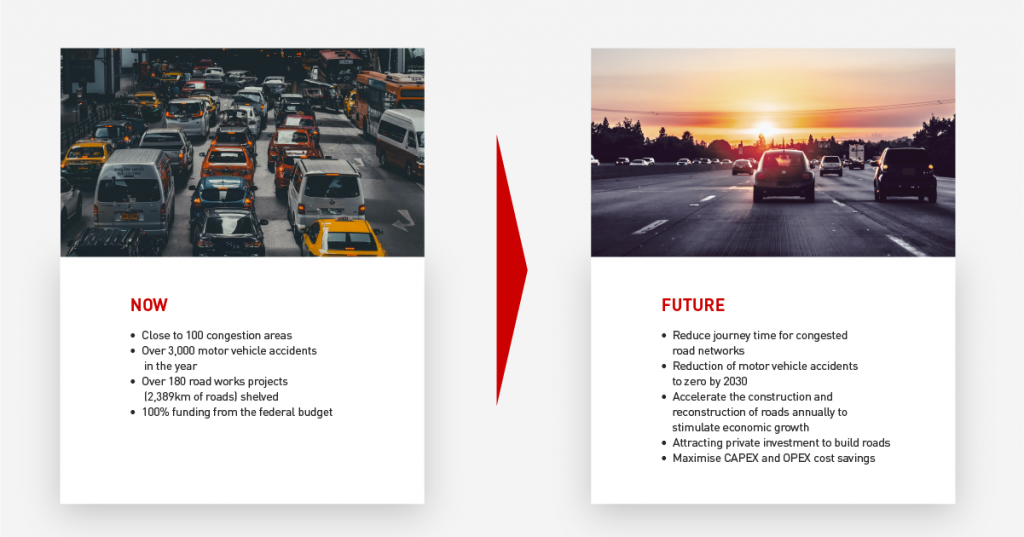
Our Approach
1. Planning for Transformation to Address Key Areas of Concern
Amongst the agency’s core issues was the presence of multiple stakeholders and requirements competing for a limited pool of resources. Our diagnosis of the problem prompted us to assist the agency in conducting a Strategic Workshop for the senior management of the agency with the objective of identifying its ‘True North’. The True North allowed the management to frame its objectives and vision into a quantifiable manner, that is to “Maximise the effectiveness of the Transcontinental Agency in managing the federal road programme to drive sustainable economic growth and quality of life”.
Due to the urgency of the issues, the agency required the initiatives and budget requests to be completed in time for its annual budget request cycle. This timeframe required a departure from the usual approach of involving taskforces, consultations and circulation of position papers and approvals, a task that would typically take between 8 – 36 months. The team from PEMANDU Associates developed a structure to compress the tasks needed into a six-week period whilst ensuring all necessary approvals and consensus were reached.
In order to develop the initiatives, action items and budget requirements necessary to address the agency’s True North, over 82 representatives from 70 organisations including government agencies such as the Ministry of Transport, the private sector, subject matter experts and civil society organisations were brought together in a series of ‘labs’.
Over a period of six weeks, the representatives worked full time in an intense problem-solving environment to identify core issues, deep dive to identify root causes and develop high-impact initiatives that would bring measurable results in line with the True North.
The PEMANDU Associates team facilitated the discussions throughout the labs, bringing innovative problem-solving methodologies that allowed participants to assess issues and initiatives along objective metrics such as impact on road fatalities or potential economic growth.
The labs were organised into four workstreams with their respective focus areas:
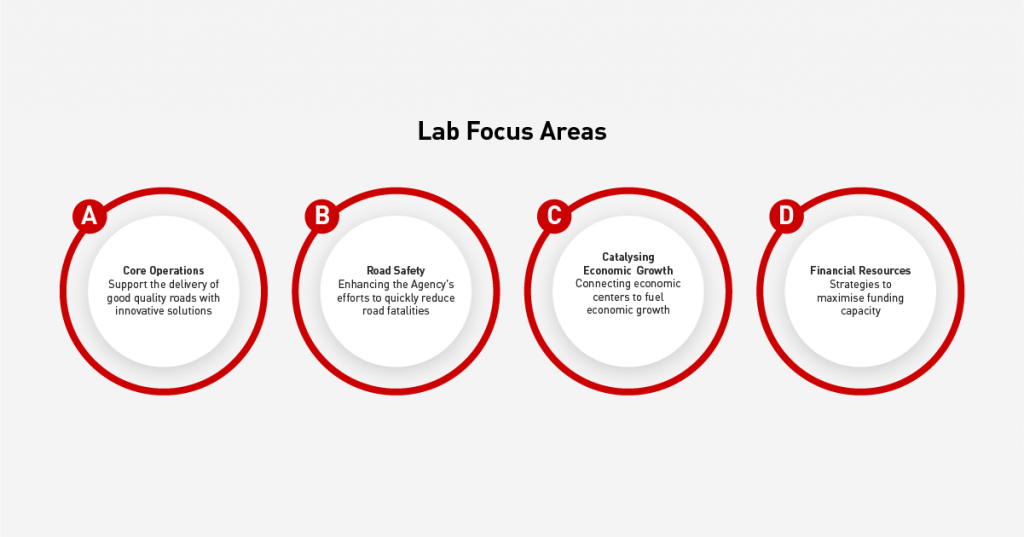
2. Bringing Root Causes Out of the Woodwork
The labs began by analysing the agency’s operations and landscape for an in-depth understanding of the issues and how they can be addressed. The following steps were undertaken for this exercise:
- Regional benchmarking and internal review to identify shortfalls
- Identifying key problems, categorising them and distilling the root causes
- Prioritising the root problems according to impact and realisability
The lab analysis revealed key insights within the workstreams:
Workstream 1: Core Operations – Systemic Issues with Road Systems and Service Delivery
One of the key findings from the teams’ analysis was that while car ownership grew by 5.3% between 2000-2016, road network growth had not kept up, growing at less than 1%. With only 71% of federal highways in standard-compliant conditions, travel time increased with an average of 91.5 hours spent in traffic jams per person/year, leading to significant economic losses from fuel and time cost.
In addition to this, a detailed study of reports over 10 years indicated that gaps in the value chain management caused an estimated 14% of road construction and reconstruction projects to be postponed annually. R&D and innovation had been implemented to reduce the price of motorways, however this was limited in its current operations.
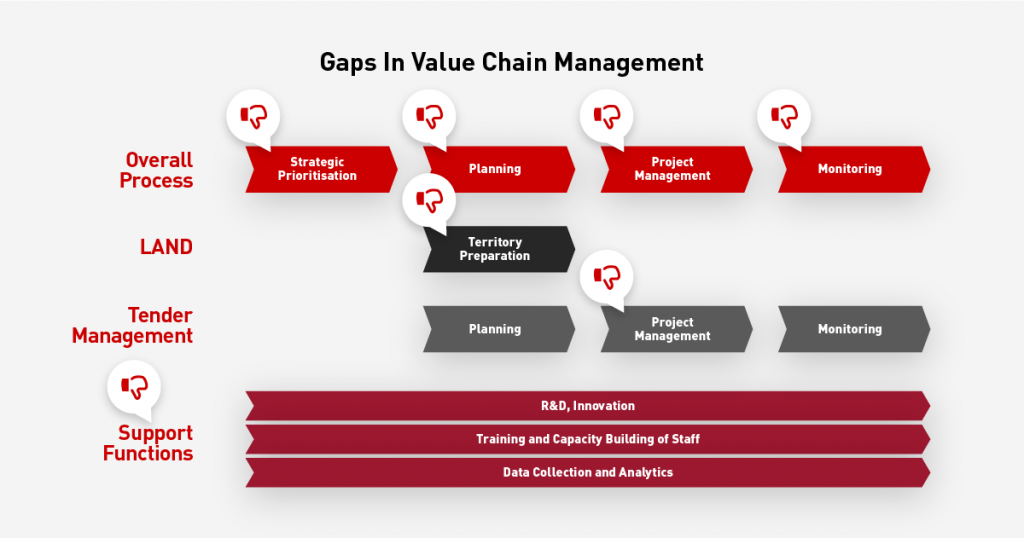
Workstream 2: Road Safety – The Common Causes of Accident Blackspots
The labs identified 778 ‘black spots’, areas where accident statistics were rising annually. Upon further analysis, the team identified two key areas that contributed heavily to incidences:
- Deficiencies in infrastructure:
- Narrow lanes led to cars overtaking through the opposite lane, with inadequate warning signs about sharp corners and deteriorated surface conditions such as slippery roads
- Insufficient rest areas, leading to long-distance driving without rest or unsafe roadside stops
- Road user behaviour:
- Lack of traffic rule enforcement to deter violations
- Inadequate road safety campaigns
Workstream 3: Catalysing Economic Growth – Lack of Regional Connectivity
The country has several emerging regions with untapped growth potential due to limited road access. Analysis by the team indicated that funding constraints were a major issue behind this with less than 30% of new road tenders completed and priority being placed on maintenance works – both due to funding constraints. However, a deeper dive indicated that while funds were available, albeit limited, the agency was faced with significant pressure from each region to invest there. Without a framework to prioritise requests, the agency faced difficulties in justifying the need for a particular road to be built.
Workstream 4: Maximising Financial Resources – Inadequate PPP Support
The country in question was still relatively new to the concept of public-private partnerships (PPP). Analysis of regional growth and economic activity indicated that there was potential for private investment to play a major part in unlocking over USD2.2 billion in projects. However significant roadblocks existed with a lack of standards for PPP project structuring deterring investors along with the relatively high cost of financing.
3. Developing Methods for Strategic Solutions
Historically, the Transcontinental Agency faced difficulty in strategically prioritising its projects and managing the competing demands on its resources. Given its limited budget, it was imperative for PEMANDU Associates to formulate the right prioritisation methods that would optimise impact on the agency’s goals. This was done in the following steps:
- Brainstorming and consolidating initiatives to address the root problems
- Prioritising the initiatives according to impact and feasibility
- Developing the prioritised initiatives into detailed implementation plans, incorporating international best practices
Specific methods were developed to address unique problems within the workstreams:
Workstream 1: How to quickly solve road congestion
To determine the most congested road sections in the country, the PEMANDU Associates team developed a formula which calculated travel time on road sections depending on congestion levels.
Utilising the formula and road user statistics indicated that that 47% of congestion on federal highways were caused by just seven roads. With this data, it became clear that initiatives should be prioritised for these roads – a recommendation that was agreed on by all stakeholders.
Workstream 3: Which projects could unlock the most growth?
PEMANDU Associates developed a Project Prioritisation Framework to comparatively assess which projects would bring the highest regional economic impact and their feasibility for both PPP (toll) roads and federal-funded roads:
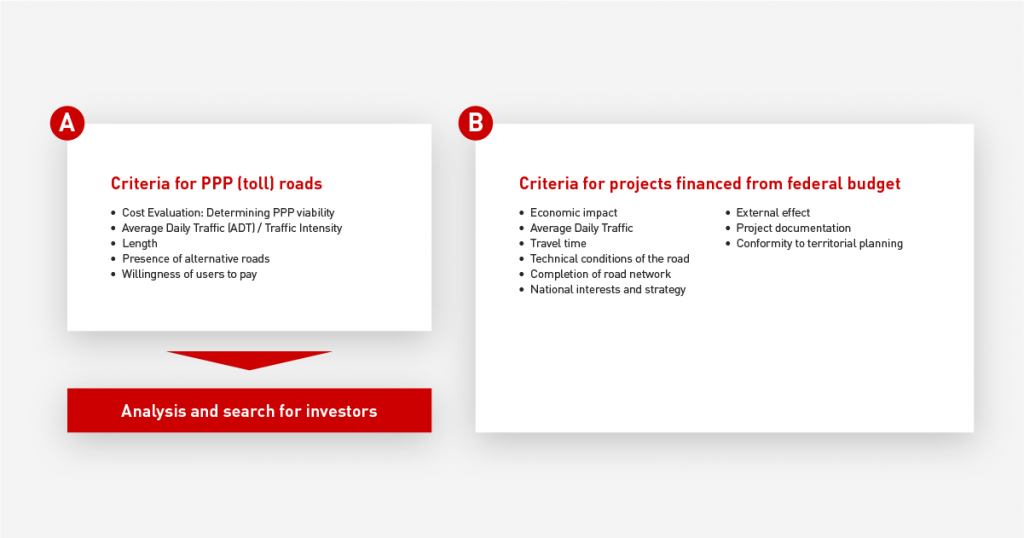
Identifying Key Initiatives to Drive Solutions
The labs developed 19 initiatives and 8 Entry Point Projects to be prioritised across the four focus areas. Among the key initiatives were:
Workstream 2: Road Safety – Systematically Eliminating Accident Black Spots
Amongst the recommendations from the lab were a prioritised monitoring of accident prone ‘black spots’, by utilising existing reports and statistics. The initiative was ready to go and approved even before the end of the labs. The monitoring would allow a proactive rather than reactive approach to prevent accidents with traffic police able to prioritise deployment of officers and solutions.
Workstream 3: Catalysing Economic Growth – Prioritising High Impact Projects
The project prioritisation system identified eight projects across three regions to be prioritised based on analysis of potential economic growth, maximising the government’s return on investment.
Workstream 4: Maximising Financial Resources – PPP Support & Unlocking Revenue
The workstream recommended a streamlined process for PPP projects, supported by a PPP Expert Center to facilitate PPP structuring and accelerate the projects. Initiatives were also identified to increase revenue for the Transcontinental Agency, from concession projects (tolls, fine collection, data services) and capitalising on roadside infrastructure through advertisements.
The Outcome
The prioritised initiatives aim to achieve the following by 2020:
- USD 3.34 billion extra-budgetary funds
- USD 754.62 million (5.2%) in cost savings
- Increased average road construction by 50% in 2019 from baseline in 2016
- 50% reduction of road fatalities in 3 years (from 19 to 10 deaths per 100,000 population). This exceeds the WHO targeted reduction in road fatalities to approximately 14 deaths per 100,000 population for the country.
- 15% reduction in journey time on 7 problematic highways
With the right methods, the Transcontinental Agency could leverage on its limited resources to optimise its operations and tap on external funding to expand its road networks for economic growth.